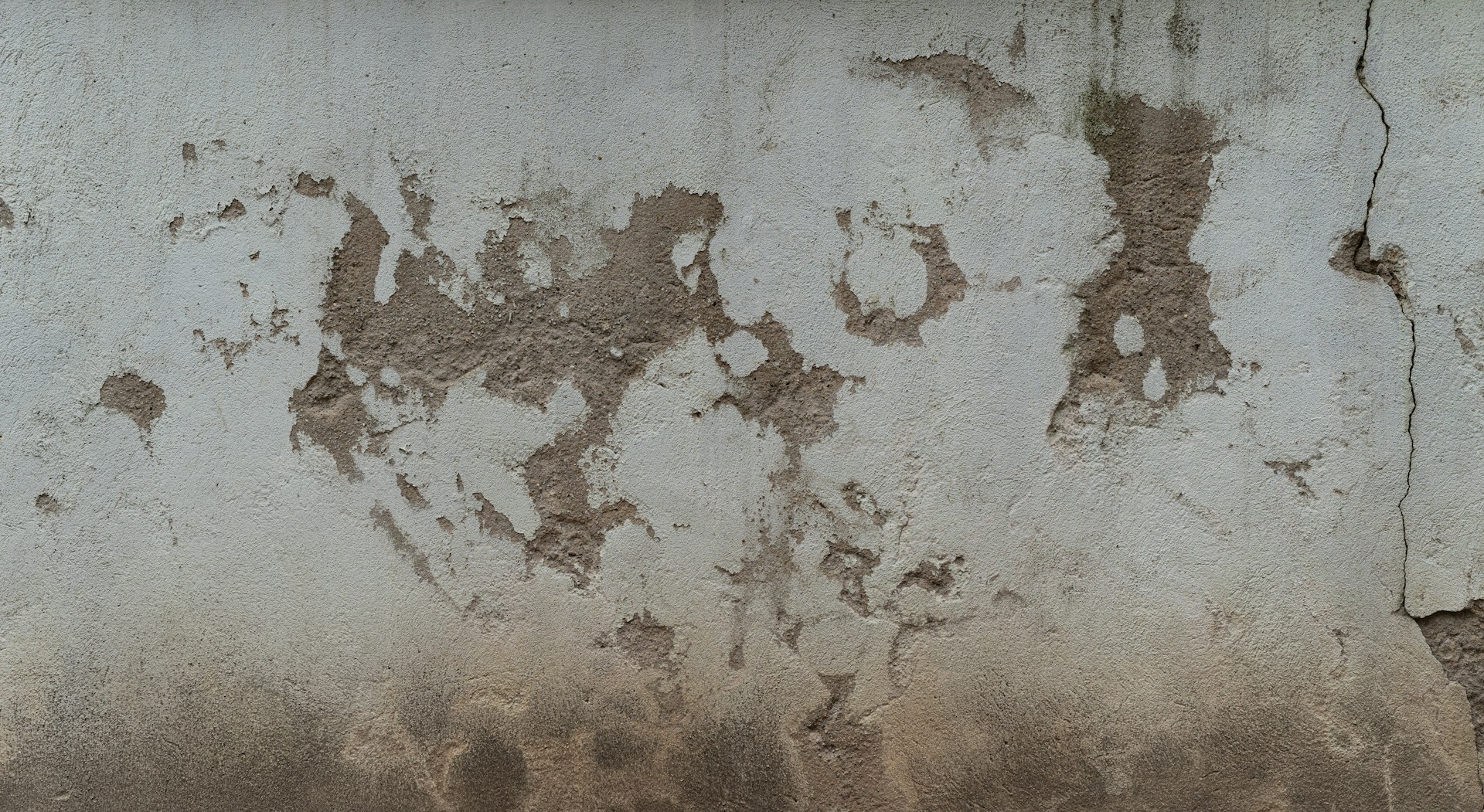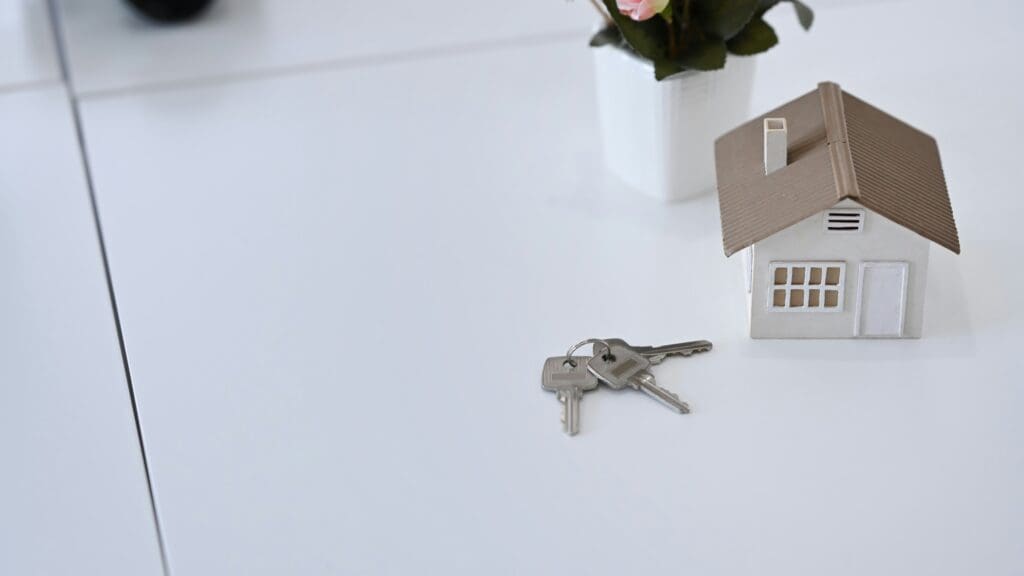Do You Have to Declare Damp When Selling a House?

Estimated reading time 9 minutes
If you are selling a house, damp is among the many things you must declare on a property disclosure statement. This way, potential buyers will be fully aware of what they could encounter should they buy the home.
Damp can be unsightly, smelly, a health risk and damaging to the property. Sometimes though it can be hard to spot and the causes, hard to trace. It is a widespread problem, and data we obtained via Statista showed that by 2022, 4.1% of England’s housing stock had some form of damp problem. Perhaps more alarming is that a reported 75% of buyers opt out of making an offer on a property struggling with damp.
In this edition of our blog, we look at damp, why you declare it, how you declare it and how to combat it to ensure you can sell your house fast and not be left struggling to sell an unsellable house.
What is damp?
Damp is a common occurrence in UK homes, spotted more frequently in older properties, it can go largely unnoticed whilst it wreaks havoc. It suddenly becomes apparent when the damage is done, and the costs of repair have escalated. That’s not always the case though, damp can show up fast and be blatantly visible, causing an off-putting appearance to a once beautiful room.
Damp is the presence of unwanted moisture in the home, it could make itself known via condensation on windows, cracks in walls or leaks in the roof. Left untreated, it will cause mould which spreads rapidly. This can then lead to structural damage to the home - therefore reducing its value - and unfortunately, health issues for those living there.
Noticeable via its smell and appearance, damp and mould should be treated fast to reduce the possibility of it spreading, minimise the health risk and maintain the value of your home.
What are the signs of damp in your house?
Damp can make itself known in a variety of ways. Sometimes, what appears to be poor-quality DIY or the result of an open window, is in fact damp.
If you spot any of the following, it’s likely a sign of damp:
- Musty smells
- Skirting boards rotting and cracking
- Discolouration and staining on walls
- Peeling wallpaper or paint
- Cold walls, floors and ceilings
- High levels of condensation
There are different kinds of damp to be aware of though, each exhibiting itself in different ways.
What are the types of damp you need to disclose when selling a house?
There are three main types of damp to declare when selling a house. Each may need a different type of treatment, so it is important to declare the type of damp affecting the home when selling it.
Penetrating damp
Penetrating damp is one of the most common forms of damp and is caused by water infiltration through an external wall and into the home. It will be noticeable by staining on the external walls, wet or damaged plaster and patches of damp appearing on walls or ceilings.
Penetrating damp is often caused by building defects and poor installations. Ill-fitted windows, leaking pipes and missing tiles can all see moisture creep in and start seeing the damp spread.
Rising damp
As the title suggests, rising damp starts from low down and makes its way upwards. This typically occurs when groundwater makes its way up through the walls. Starting at the bottom, it gradually rises, making its effects known. Most buildings are built with this risk in mind and have a non-absorbent, water-resistant damp-proof course installed. This preventative measure can break down over time, leading the water to find its way in. Older buildings, built before the addition of a damp-proof course became standard, find themselves much more susceptible to rising damp. You’ll notice rising damp through rotting skirting boards, carpets lifting and stains on the lower part of the wall.
Condensation
Condensation is something we see a lot in our homes. Especially in kitchens and bathrooms where large amounts of moisture are present. If there is not a lot of ventilation, this moisture has nowhere to go, resulting in it embedding itself on the surface and gradually turning to black mould.
Can I sell a house with damp?
Even though your home may be blighted with one or more of the forms of damp, you can still sell your home. Selling a home with damp is not illegal, but, as we mentioned in our intro, you must disclose that damp is present in the property.
You should get a professional surveyor to conduct a damp survey. They can then assess how severe the problem is and what may need to be done to rectify it. You can then add this to your property information pack, so any buyers are fully aware before making an offer on the property. Some homeowners may see that the damp is only minor and think that a quick paint job over it can reduce the need for disclosure. They would be wrong! If you hide the problem, even behind a lick of paint, you could find yourself in all sorts of legal trouble if the new buyers discover the damp.
You may, because of the report from the surveyor, decide to hold off selling and instead get the problem rectified. This could be beneficial, as the offers you get whilst damp is prevalent are likely to be less than the true value. You’ll also find your potential pool of buyers reduced should damp be a problem.
What happens if I don’t disclose damp when selling a house?
If you simply decide to paper over the cracks by hiding the damp and not disclosing it, you could find yourself with expensive legal costs to bear. The Unfair Trading Regulations 2008 and the Property Misdescriptions Act 1991 state that when selling a house, it is a legal requirement to disclose damp when selling a house as well as many other property specifics. Should you not, you could find yourself prosecuted and face a heavy fine. Not only that, if the new owner discovers the damp and can prove it was not disclosed but known about, the repair costs could also be added to the legal costs you have to cover.
Is it beneficial to fix damp before selling a house?
In a word, yes. However, depending on the level of damp present, the costs could vary greatly. A minor treatment could be cheap, and quick to rectify, allowing you to get your home back on the market relatively fast.
If the problem is severe, you’ll have to weigh up whether the cost of repairing it is affordable and likely to be covered by the sale of the house. If for example it’s going to cost £5,000 to fix the problem, yet your house value does not go up after the repairs, it’s likely not worth it. Choose not to fix the damp and you may find your potential buyers rather limited and see the house sit on the market for longer with the damp possibly getting worse.
This is why many people look to cash house buyers. They can buy the home regardless of the severity of the damp and guarantee the sale.
How can I treat damp before I sell my house?
With the results of the report from the surveyor, you’ll be able to see just how bad the problem is and decide on appropriate action. In some cases, you may need to have a chemical damp proof course injected into the walls. This can be expensive and depending on the thickness of the wall, take months to dry out and become effective.
You could also look at installing a dehumidifier, adding vents and extractors to bathrooms and kitchens and simply repairing any leaks. Insulation also plays an important role in damp proofing so it could also be an avenue worth inspecting.
How much does damp devalue a house?
The value of your home can drop significantly if there are vast amounts of damp present. In some cases, you could see 10% wiped off the property value. With the current average house price in the UK at £293,000, that’s almost £30,000 you could be losing. In extreme cases where damp has caused structural issues you could even see as much as 50% knocked off the price. Based on that average house price, that’s over £145,000 you could miss out on!
How can I sell a house with damp?
You can sell via the traditional market, but it may be best to get the damp issues sorted first. At least that way, you can still try and get as close to market value as possible. You’ll have to weigh up the time and costs though. Should you be in need of a quick move, or simply don’t have the money for the repairs, this could be an extremely slow route to sale or one where you have to take a significant hit on the price you’ll get.
You could also consider an auction, many property investors will gladly take a home in bad condition at an auction, all with the aim of upgrading it and then selling it for a profit. This can be a handy way to sell as your potential buyers will know about the damp in advance and won’t see it as a deterrent.
The only issue is that it isn’t always fast and there is no guarantee anyone will bid on your home. Even if it sells, you then have to wait for various processes to complete which could see the sale take well over a month. With the commission taken by the auction house too, you could lose even more of your already reduced property value.
Finally, a cash house buyer could be a possibility. With a guaranteed sale, built around a timeframe that suits you, there is no need to be concerned that damp will hinder the sale. Most cash house buyers will buy any home “as-is” and do it without charging you a penny. Where with auctions and estate agents there are fees to pay, with cash house buyers, you sell your house for free, allowing you to keep all of the money from the property sale.
If you have a damp problem in your home and are struggling to sell, speak to Bettemove. We can have your house sold in a timeframe that’s suits you.



